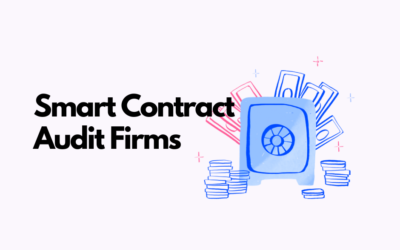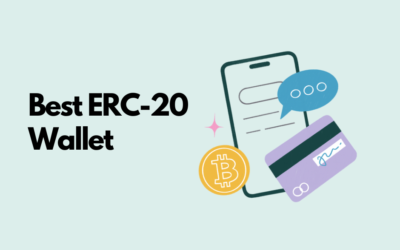A smart contract audit is a process of reviewing and testing the code of a smart contract to ensure that it is secure, reliable, and functions as intended. Here are some steps you can follow to audit a Solidity smart contract:
1. Understand The Contracts
Understand the System End-To-End
The first thing you should do when auditing a smart contract is to review the code. Start by carefully reading through the code of the smart contract to get a general understanding of how it works. Look for any potential vulnerabilities or weaknesses that could compromise the security or integrity of the contract.
Review the contract’s design: Consider the overall design of the contract, including the types of data it stores and the functions it performs. Make sure that the contract is designed in a way that is efficient, secure, and scalable.
After reviewing the code, schedule a meeting with the development team. Most auditors skip this part, and they just assume that they’ll be able to quickly understand all nuances of the code.
The team who originally developed the smart contract is the best source of information gathering. They’ll warn you of pitfalls, notify you of assumptions, and point out other potential problem areas. They are a huge asset to your audit. Use them.
Gather Documentation
Analyze the readme. Make sure the project leverages proper documentation. Gather design architecture documentation. Review the comments. A proper list of user stories will also help understand the purpose of the contract.
All of these elements are essential in performing a proper audit.
Understand Compliance Risks
Check for compliance with relevant regulations: Depending on the context in which the contract will be used, you may need to check that it is compliant with relevant regulations.
Find Similar Smart Contract Audits
Reviewing audits of similar smart contracts can be useful in a number of ways:
It can provide context and understanding of common issues and best practices in the field. By reading through audits of similar contracts, you can learn about the types of vulnerabilities and issues that are commonly found in smart contracts, as well as the approaches that are used to address them.
It can help identify potential areas of concern in your own contract. By comparing your contract to others that have been audited, you may be able to identify areas where your contract might be vulnerable or where it could be improved.
It can provide inspiration for approaches to addressing potential issues. By reading through audits of similar contracts, you may be able to learn about approaches that have been used successfully to address specific types of vulnerabilities or issues.
However, it’s important to keep in mind that each smart contract is unique, and what may have worked for one contract may not necessarily apply to another. It’s also important to remember that an audit of a similar contract is not a substitute for a thorough audit of your own contract. It is still important to have your own contract thoroughly reviewed by an experienced auditor.
2. Review The Code
Use Multiple Developers
It can be beneficial to have multiple developers review code, as different people may have different perspectives and approaches to solving problems. Having multiple reviewers can help catch potential issues that a single reviewer might miss and can also lead to a more thorough review process.
It can take more time and effort to coordinate multiple reviewers, and there may be more conflicting feedback to resolve. Additionally, if the reviewers are not familiar with the codebase or the context in which the changes are being made, they may not be able to provide useful or relevant feedback.
It’s critical to get multiple reviewers up to speed quickly. Smart contracts are immutable and are honeypots for hackers. Getting multiple eyes on the code is essential.
Manually Review Each Line
Break the code down into smaller chunks or blocks, and focus on one chunk at a time. This can help make the review process more manageable and allow you to focus on one aspect of the code at a time.
Look for patterns or common issues in the code. For example, you might look for variables that are not initialized, or for areas of the code where there might be performance or security issues.
Pay attention to comments and documentation within the code. These can provide valuable context and help you understand the intentions of the code.
Use a checklist to ensure that you are considering all relevant factors during the review. This might include checking for things like proper error handling, adherence to coding standards, and the use of appropriate data structures and algorithms.
Consider testing the code as part of the review process. This can help you understand how the code behaves and identify any issues that might not be immediately apparent during a manual review.
Take breaks and review the code in multiple sessions if necessary. It can be easy to overlook things when reviewing code, so it’s important to take breaks and come back to the code with fresh eyes to ensure that you are considering all aspects of the code.
Some developers find it helpful to print out physical copies of the code. This code printer makes printing Solidity code easy.
Identify High-Risk Areas
Every line of code must be reviewed, but it’s important to pay extra attention to key areas as well. These typically include instances when assets are transferred, assets are created, assets are escrowed, and important calculations are made.
Access control is another high-risk area that should be tested. For instance, you may only want certain functions callable by a DAO or owner.
3. Test The Smart Contracts
Run Automated Test Suite
You should test the code to make sure that it functions as intended. This can be done manually by manually executing the contract’s functions and checking the results, or by using automated testing tools. Hardhat provides excellent resources for running automated test suites.
Use Automated Audit Tools
There are several static analysis tools that can help identify potential vulnerabilities in Solidity code. These tools can analyze the code and flag potential issues, such as uninitialized variables, unused variables, or unintended reentrancy.
Check For Common Vulnerabilities
Check for security vulnerabilities: Look for common security vulnerabilities such as reentrancy attacks, unauthorized contract calls, and frontrunning attacks. You should also check for any potential vulnerabilities related to the specific platform the contract is running on.
4. Document Issues and Provide Recommendations
Document your findings: Document any issues or concerns that you find during the audit process, and provide recommendations for how they can be addressed.
5. Publish a Smart Contract Audit Report
Engaging the services of a professional smart contract audit firm can provide a thorough, independent review of the contract’s security. An audit can identify potential vulnerabilities and provide recommendations for addressing them.
Overall, auditing a smart contract requires a combination of technical knowledge and critical thinking skills. It is important to approach the process with a thorough and meticulous attitude to ensure that the contract is as secure and reliable as possible.








0 Comments